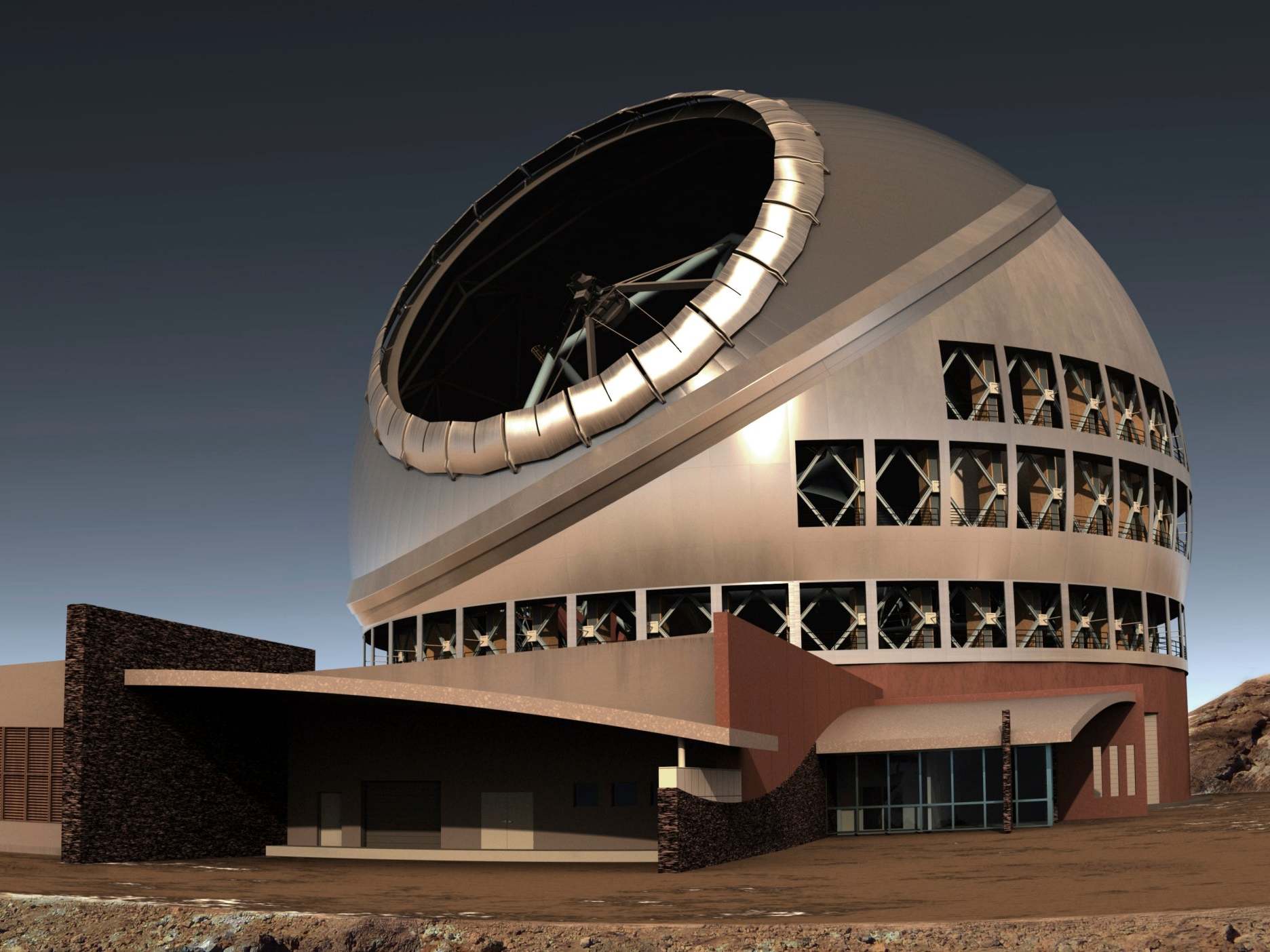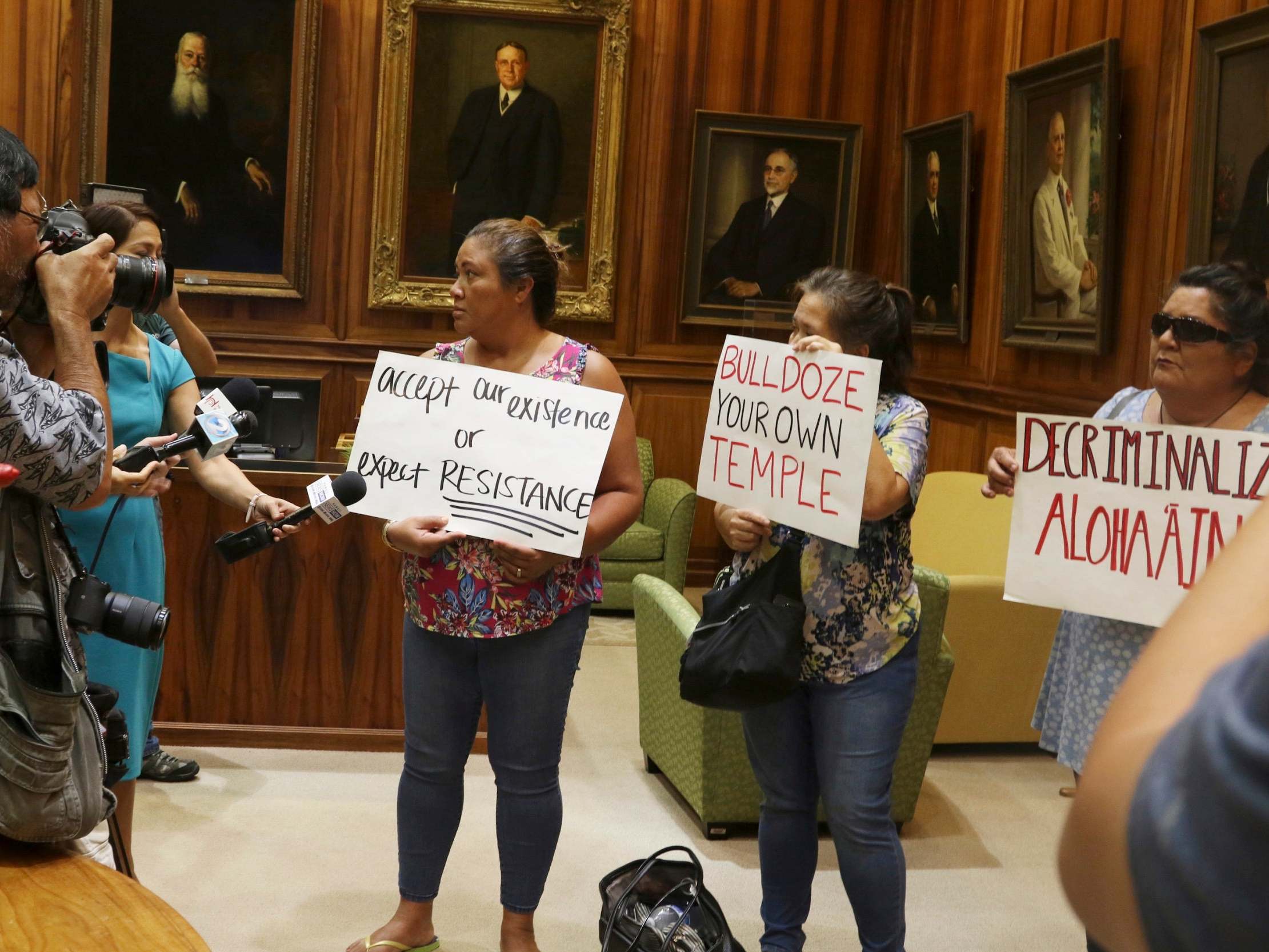Giant telescope that will allow glimpse of time just after Big Bang threatened by protests over 'sacred' site
Native Hawaiian groups opposing astronomy project consider summit of Mauna Kea place of prayer

Your support helps us to tell the story
From reproductive rights to climate change to Big Tech, The Independent is on the ground when the story is developing. Whether it's investigating the financials of Elon Musk's pro-Trump PAC or producing our latest documentary, 'The A Word', which shines a light on the American women fighting for reproductive rights, we know how important it is to parse out the facts from the messaging.
At such a critical moment in US history, we need reporters on the ground. Your donation allows us to keep sending journalists to speak to both sides of the story.
The Independent is trusted by Americans across the entire political spectrum. And unlike many other quality news outlets, we choose not to lock Americans out of our reporting and analysis with paywalls. We believe quality journalism should be available to everyone, paid for by those who can afford it.
Your support makes all the difference.Native Hawaiian groups have vowed to protect the Pacific state's tallest mountain from construction of a giant telescope aimed at helping scientists study the time just after the Big Bang.
State officials will try to close the road to Mauna Kea summit off to the public on Monday, as trucks carrying equipment are set to start work on the planned astronomy station.
Opponents have formed a peaceful protest camp at the base of mountain – considered sacred by some Native Hawaiians, who believe the peak represents the realm of gods.
The $1.4bn (£1.1bn) project has already been delayed by years of legal battles and demonstrations, drawing attention from the likes of Aquaman actor Jason Momoa, who has Native Hawaiian ancestry and has voiced opposition to the telescope.
State officials said National Guard units would be on hand to escort personnel to the peak today, and warned that anyone attempting to stop construction work would be arrested.
Groups of activists sang and prayed at the base of the mountain on Hawaii’s Big Island on Sunday afternoon. “This is Hawaiian homelands,” said Kealoha Pisciotta, one of the protest leaders.
Anti-telescope demonstrations previously disrupted a groundbreaking and blessing ceremony at the site in 2014.
Construction stopped in April 2015 after protesters were arrested for blocking the work. A second attempt to restart construction a few months later ended with more arrests and crews pulling out.
According to the University of Hawaii, ancient Hawaiians considered the location “kapu” – both forbidden and sacred. Only the highest-ranking chiefs and priests were allowed to make the long trek to Mauna Kea’s summit above the clouds.

Scientists with the Thirty Metre Telescope (TMT) selected Mauna Kea in 2009 after a five-year, global search for the ideal site. Astronomers hope the massive telescope will help them peer back to the time just after the Big Bang and answer fundamental questions about the universe’s beginnings.
Hawaii’s Supreme Court has ruled the construction is legal, permits are in place, and the state has given the TMT corporation behind the telescope a green light to resume its efforts. The organisation is made up of a group of universities in the US and Canada, with partners from China, India and Japan.
Supporters of the giant telescope say the cutting-edge instrument will not only make important scientific discoveries but bring educational and economic opportunities to Hawaii.
If built, the telescope’s 30-metre primary mirror will be three times as wide as the world’s largest existing visible-light telescope, with nine times more area.
Governor David Ige said unarmed National Guard units will be used to transport personnel and supplies and enforce some road closures, but they will not be used in a law enforcement capacity during planned protests.
In a news conference on Sunday, Mr Ige said he “respected the right of people to protest” at the telescope site as long as protesters behave lawfully.
“As construction begins, our number one priority is keeping everyone safe,” Mr Ige said, adding that he wants to make sure construction workers and truck drivers have unimpeded access to the telescope site.
The Hawaiian governor was forced to declare an emergency on the island of Maui last week as firefighters battled a blaze that forced the evacuations of thousands of people and sent huge clouds of smoke billowing over the beaches.
Additional reporting by AP
Join our commenting forum
Join thought-provoking conversations, follow other Independent readers and see their replies
Comments